Moroccan style in the interior
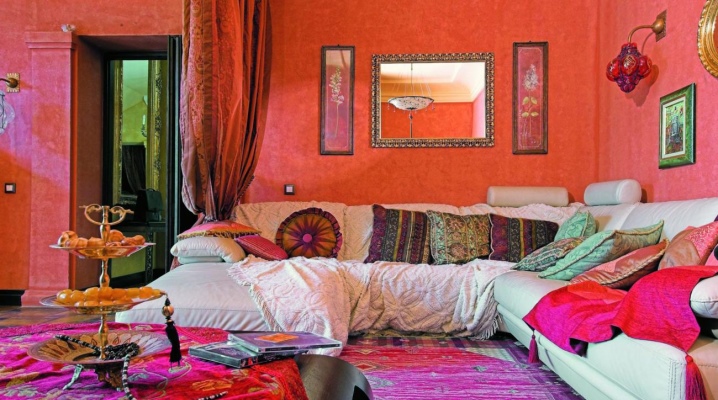
The familiar in our understanding is often tantamount to the concept of "boring", which is why we are so fond of various exotics. The culture of other countries finds millions of followers in our country, and it is not surprising that many people want to introduce features of Japanese, Chinese, French rustic or English Victorian design into the interior. However, these are all rather commonplace decisions, while it is much more interesting, and for many it will be more attractive moroccan style.
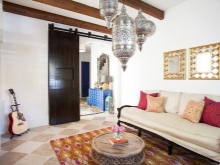
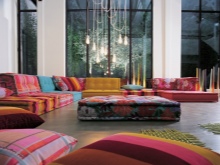
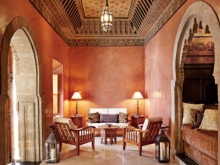
Distinctive features
Regarding something, you can often hear that a mix of several styles, taking the best from each, is the optimal solution. Moroccan style is just such a mix, considering that Morocco is a country where several large and completely different cultures intersect. The population of this state in terms of language and culture is closest to the Arabs in the broadest sense of the word, but here, like nowhere else, the influence of both the rest of Africa and the Mediterranean is strongly felt. Thanks to this, the modern design of the apartment may well be made in the Moroccan version without loss of comfort.
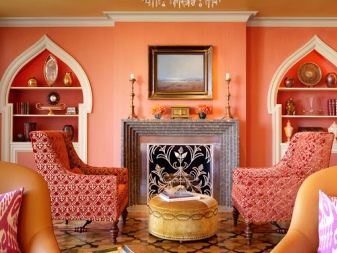
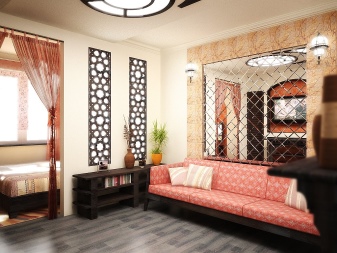
The Moroccan-style room will be remembered forever thanks to the unusual combination of muted and bright colors.
Terracotta and ocher are interspersed with red and purple, while white and sandy colors are interspersed with rich green. The task of the interior designer is to create a ripple effect, mutual penetration of shades according to the principle of light and shadow... If the master succeeds, the dwelling will clearly not be for melancholic or phlegmatic - the interior will excite and excite.

At the same time, not every room can be easily and quickly remodeled in the best traditions of the Arab world. The fact is that the Moroccan style assumes a large number of arches and niches, and door and window openings should, if possible, be lancet. If you ignore this requirement, you may not achieve your goal and leave a certain feeling of understatement - that is why in our country not every owner decides to decorate his apartment in a high-rise building in the North African style.
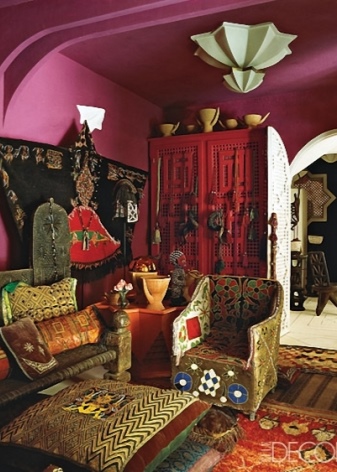

Finishing options
The Moroccan style is very diverse and does not accept strict restrictions on the rules, and yet, like any other established design style, has its own characteristics that are worth observing for the sake of authenticity. To make home renovations truly North African-looking, it makes sense to use believable-looking materials.
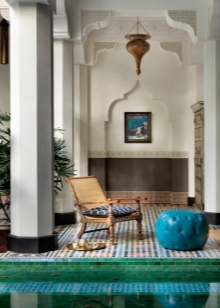

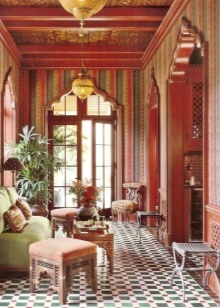
Sten
The first thing that catches your eye, of course, is the walls, and in Morocco they are usually covered with a special plaster, which is called "tadelakt". When solidified, this material forms a very smooth, literally glossy surface that looks aristocratic and very neat. Tadelakt always has warm colors and looks pleasant in the interior.
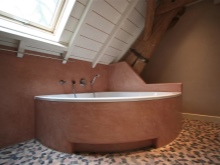
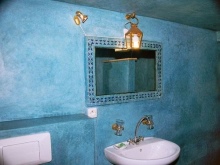
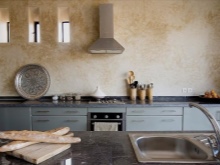
Another thing is that in our realities it is unlikely that it will be possible to get the original tadelakt, which means that we will have to look for reasonable alternatives. The simplest option is to simply paint the walls in one tone from a suitable palette, or, alternatively, even paste over with wallpaper, so long as they generally provide the same effect and have a rather expressive texture. The result in itself will not be ideally "Moroccan", so there should be a carved frieze under the ceiling, giving it an oriental flavor.
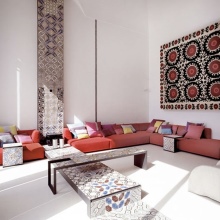
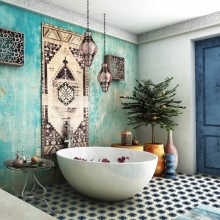
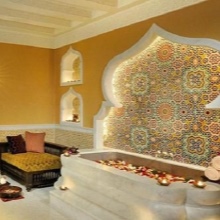
The project should immediately include an abundance of patterns that are completely natural for the East.
According to the instructions of the Koran, in Islam, the image of a person is unacceptable, but after all, it is necessary to decorate the dwellings somehow - so they are decorated with the help of a characteristic mosaic or panel. In some cases, wallpaper manufacturers help out well with this, they immediately release their products with specific Arabic ornaments, but in many cases the owner of the premises has practically no alternative but to order a real hand-painted painting.


Paul
Original typical floor for rooms in the Moroccan style, assembled from a mosaic - at least, this is still done in this country in non-poor houses. In fact, this is both quite expensive and not very practical, since small details require a large number of crevices, and we have a slightly different climate so that moisture and dirt accumulating there does not create big problems.
For this reason, the domestic rethinking of the Maghreb floor allows the use of almost any finishing materials, among which the first place in popularity is occupied by the floor tiles closest to mosaics.
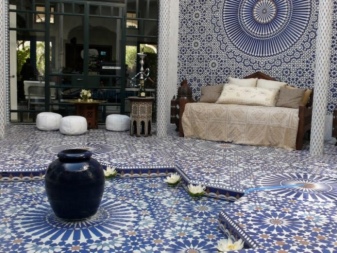

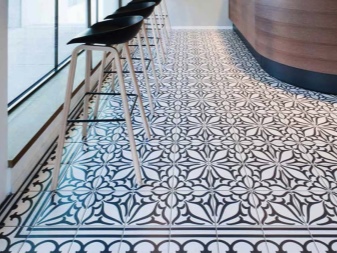
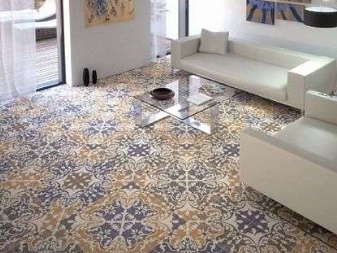
In theory, any other materials can be used, from porcelain stoneware to laminate and even parquet, but only on the condition that their design does not allow you to immediately determine what it really is.
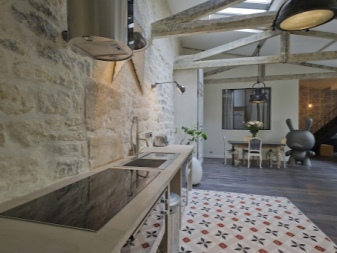
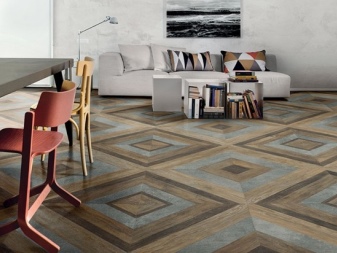
Ceiling
As for the decoration of the ceiling, Moroccan designers are as laconic as possible - they do not give any detailed answer to the question of how to deal with it, and briefly advise to plaster it. Most often it is understood that he does not need any special decorations and is focused mainly on fulfilling his direct function - protecting the room from sunlight.
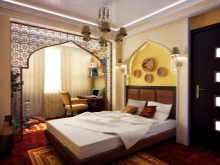
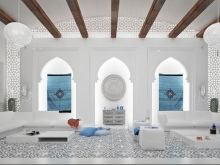
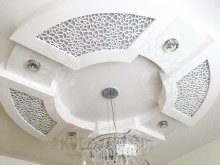
At the same time, too high ceilings can spoil the impression of the design a little, therefore they need to be lowered so that this does not contradict the general design style. In this case most often they get by with ordinary wooden panels, coffering is also allowed.
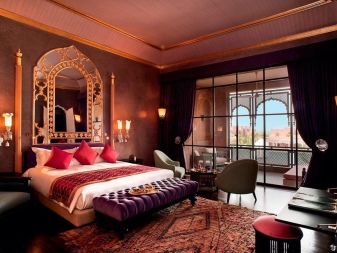
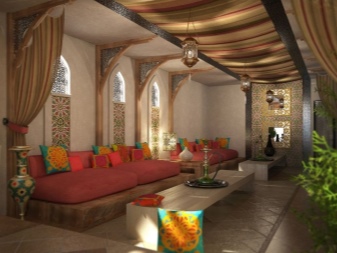
Furniture selection
It's hard to say where it came from, but in the Arab world tall furniture is not very welcome, even if it is a closet that is "supposed" to be high enough. In fact, among the Arabs, such items of furniture, due to their "short stature", are more reminiscent of our chest of drawers, and the same requirement applies to the rest of the furnishings.
However, this also has an obvious advantage - since the upper part of the walls is not blocked by anything, there is no feeling of excessive filling of the room, even if there is really a lot of furniture... Not liking tall headsets, Moroccans solve the problem of capacity by expanding them to the sides.
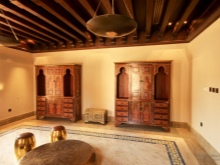

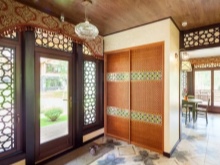
Living conditions in Morocco, of course, differ from family to family, but in our understanding, the East is always some unimaginable luxury from the tales of Aladdin.
The top of the chic in the understanding of the Moroccans, whose significant part of the country is occupied by a barren desert, has always been carved wooden objects, so the table simply cannot be too banal and straightforward. If the wooden headset is also hand-painted, then you are just a king.

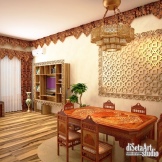


A hot climate inevitably provokes laziness and a desire to relax, because in the Moroccan style, there should be a place for a large amount of upholstered furniture... As it was said, everything is not so good with wood in this country, therefore sofas and armchairs are often decorated with metal, a little unusual for our eyes.


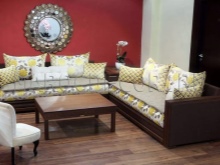
Decor elements
In the conditions of a desert region, you want as much as possible that real comfort awaits at least at home. No wonder that Moroccan style strongly gravitates towards the ostentatious use of various decorations, which do not even just stand somewhere in the display case of the sideboard, but are available for everyday use.
A separate topic is textile, of which there is so much in houses decorated in traditional Moroccan style, as, perhaps, nowhere else in the world. There has been trouble in the Arab world with classic upholstered furniture for many centuries, but these guys did not even think of sitting on a hard one, instead using pillows very actively. These soft elements have not lost their relevance today, therefore, at a low table, guests may well sit not on chairs, but on pillows lying directly on the floor.
This is all the more likely if the designer remembered that another integral part of a wealthy Muslim home is a fluffy Persian rug.
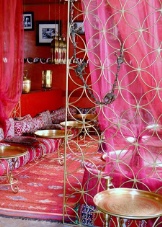
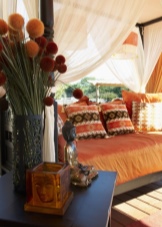
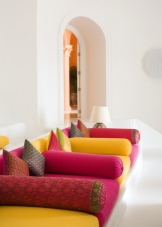

Luxurious canopy on the bed only complements the triumph of textiles in the interior, and yes - forget that the fabric can be white! For curtains it is better to choose the lightest fabrics - in no case should they block the access of a light breeze inside the room.
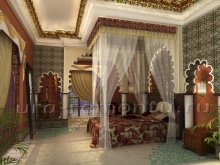
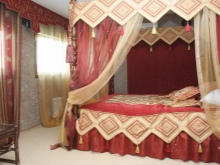

With paintings in Islam did not work out, although recently this situation has been gradually changing. The role of painting is played by abstract mosaic in the form of patterns, which can be found both on the walls and on the ceiling. If a picture must have an exquisite frame, then an interesting mosaic is often hidden in a special niche, which sometimes gives the impression of an additional window. Alternatively, a carved perforated wood partition can also be used.
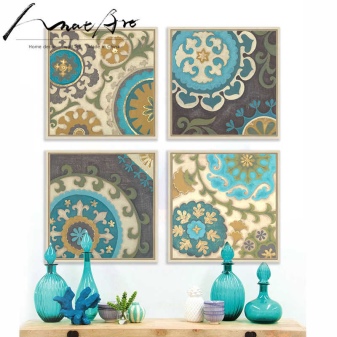
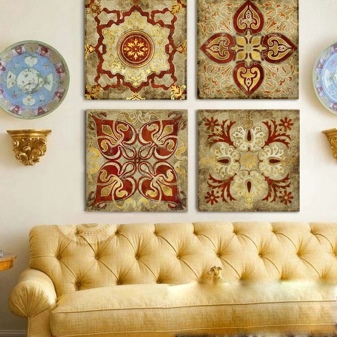
good old candlestick has not been used for its intended purpose in the homes of Morocco for a long time, but it is quite easy to buy it in the souvenir markets of this tourist country and bring it home. It will radically differ from its European counterparts with its unusual design and will add even more flavor to the overseas housing design.
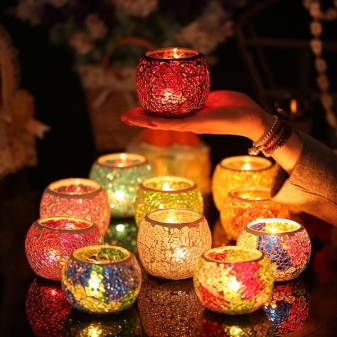
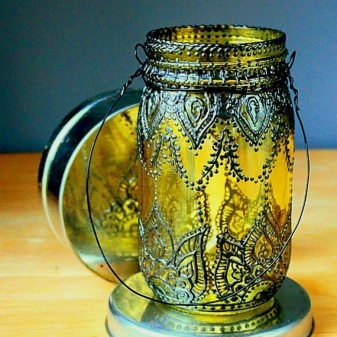
Lighting
Morocco is Africa, the northern spurs of the famous Sahara Desert, and where there is no shortage of natural light, it is here. Local residents are trying to hide from the scorching sun more reliably, but then they have to look for an alternative in the form of artificial lighting. The same is true for Moroccan interiors in our country, because the gloomy winter light from behind the window will definitely not add naturalness to the design of the room.
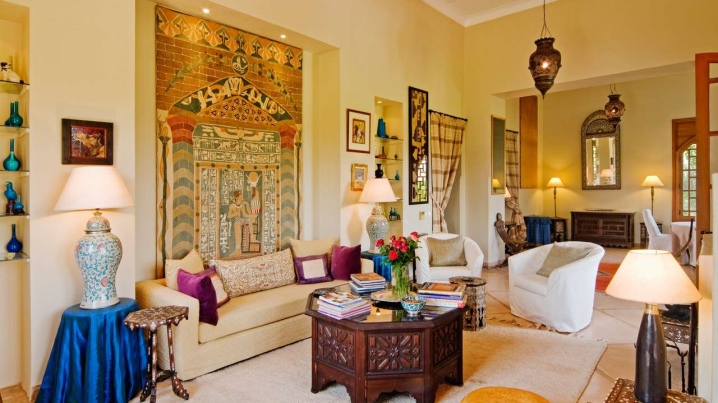
Full-fledged chandeliers are alien to the Moroccan style - central lighting is not welcome here, instead spotlights are common, creating an atmosphere of intimacy, especially if real candles are used. Floor lamps or even lamps hanging from the ceiling are appropriate, if they are taken into a characteristic grid in the form of a ball or the so-called Indian lattice. Alternatively, the lampshade is made of multi-colored glass fragments, and if there is money, interspersed with gilding or silver.
Cold light cannot be combined with Moroccan style at all, so when choosing lamps you should always choose only those that shine with warm light.
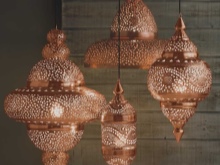
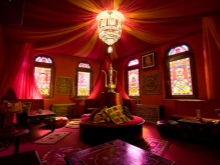
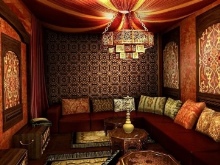
Decoration of different rooms
The main subtlety of the decision to decorate a house in the Moroccan style - this is the need to maintain doors and windows in a shape that vaguely resembles the dome of a mosque. It is hardly possible to find a door leaf of such a shape, therefore it is wiser and easier to do with the arches of the corresponding contour wherever possible.
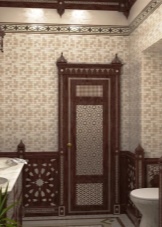
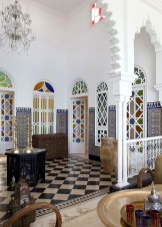
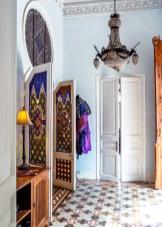

Making out living room, we must once and for all forget about modesty - the East seems to us so rich precisely because it is customary to show off absolutely everything that can be boasted there. The living room is a full-fledged showcase of your home, so show that you have achieved success!
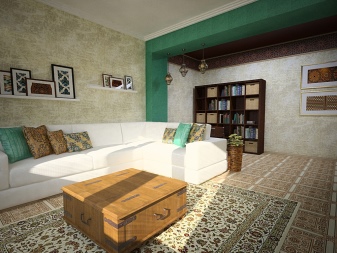
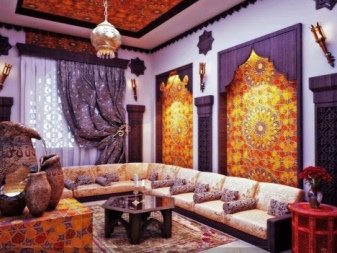
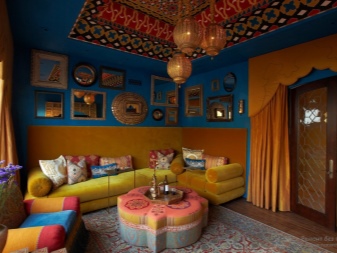

Bedroom - this is the focus of comfort. There may be a minimum of any other furniture, but you definitely need a bed that everyone would just envy. This applies not only to the size, but also to the impressive canopy. Patterns in the bedroom, perhaps, are not needed, a monochromatic finish and the same textiles are more suitable here, but at the same time they should be of a contrasting color so as not to merge in the eyes.
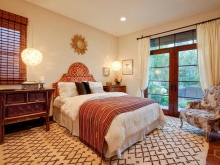
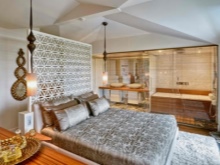
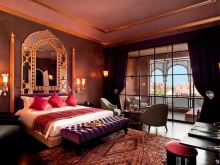
Bathroom and kitchen - these are parts of the dwelling where it is literally necessary to fully disclose the theme of the mosaic.You can think of a million reasons why you do not use this decor detail in other rooms, but here, where tiles are literally required, the owners simply will not have a single reasonable reason to refuse such a decision.
Moreover, in the bathroom a bathtub and a toilet bowl, and in the kitchen - a sink are traditionally white elements, and this despite the fact that such "boring" colors are not inherent in the Moroccan style.
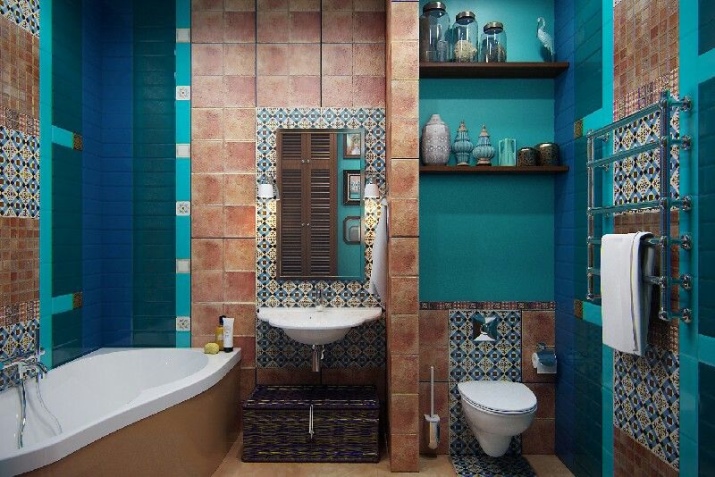
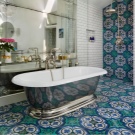
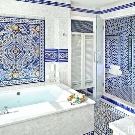
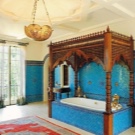
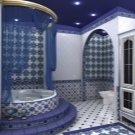

You can not invent anything with the order of some atypical plumbing, but instead "block" its whiteness with a particularly bright mosaic throughout the wall... At the same time, the kitchen definitely need curtains in the Mediterranean style, creating a tavern atmosphere for light and pleasant snacks - Morocco, after all, also opens directly to the Mediterranean Sea.


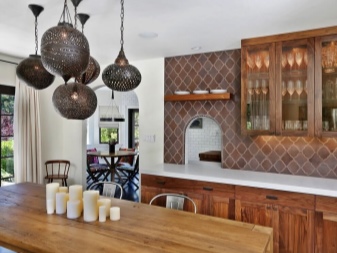
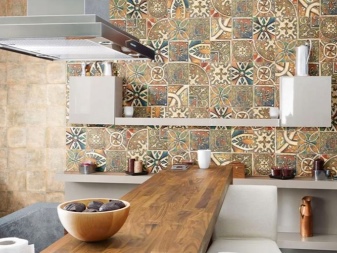
Balcony in Mediterranean styles it has a special meaning - in the daytime, when it is very hot, it must protect the interior from the sun, therefore it should be covered, and also decorated with a lot of greenery.
If desired, it can be sheathed with the same perforated wood panels with carvings, but in general you will have to take into account that Moroccan balconies are completely unsuitable for our winter.

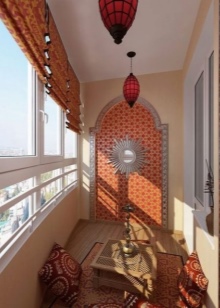

Interior examples
In the first photo - typical Moroccan living room. Here and the red color of the walls, which is considered standard for this style, and carved wooden partitions, and stylish expensive wood furniture, and lattice lamps, and a patterned panel on the wall.

The second example shows a bedroom in a slightly expanded version. - not visible in the photo, but it seems to flow into the living room. There is no full-fledged canopy by the bed, but they obviously did not save on the headboard, and the bed itself is rather big. In the background, you can clearly see how a "classic" window opening should look, and decorative tables and a vase once again demonstrate the love of aesthetics.
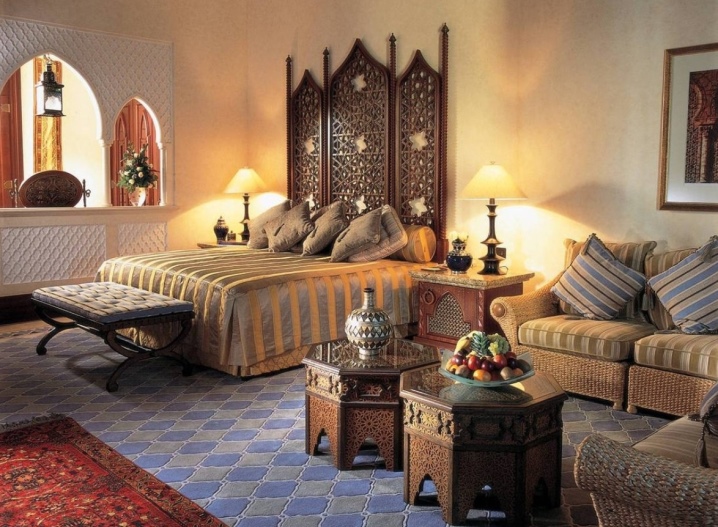
The third photo shows how to create a “typical Arabian” design of a bathroom using ordinary tiles and level a large amount of white plumbing. The sink is made to match the tiles, and to emphasize the chic, the metal details are made "gold".
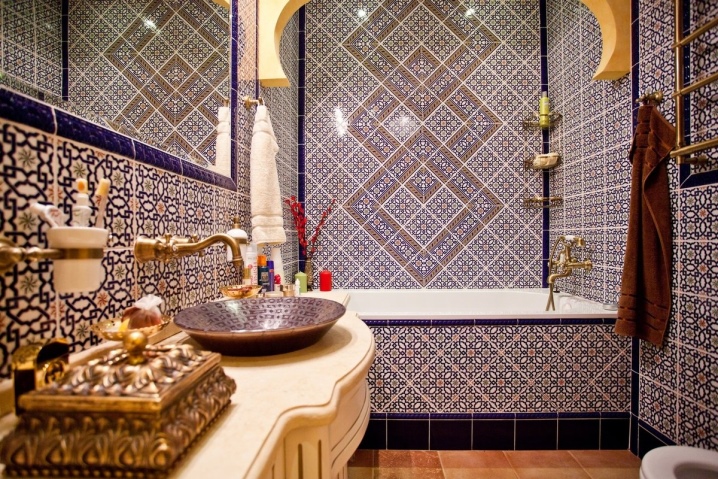
The kitchen features Moroccan style not so striking however, the set is made in the color and shape typical of medieval Berber fortresses, and the imitation of stained glass only enhances the effect created.
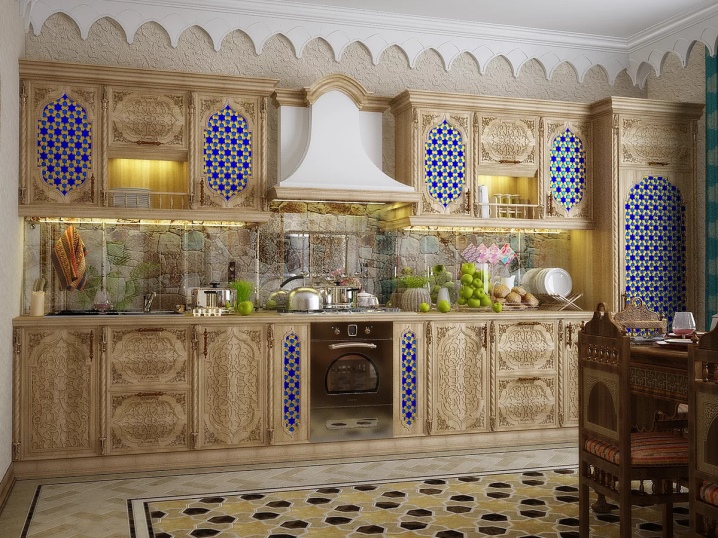
The following video will tell you about the Moroccan style in the interior.













The comment was sent successfully.